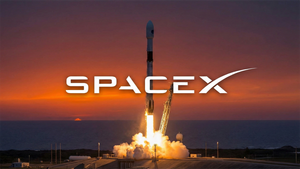
The corporate landscape is currently experiencing a period of surprisingly robust earnings, particularly among S&P 500 companies, with an "insatiable demand for Artificial Intelligence (AI) technology" identified as the primary catalyst. This AI-driven momentum is not only fueling remarkable profitability for mega-cap tech companies but is also laying the groundwork for strong earnings growth projections extending into 2025 and 2026, thereby propelling overall market optimism.
The first half of 2025 has showcased a resounding triumph for corporate America, as S&P 500 earnings reports consistently surpassed analyst expectations. This surge is largely attributed to the burgeoning demand for AI, which has transitioned from a promising technology to a fundamental economic force, delivering tangible profitability and productivity gains across an expanding array of industries. Analysts project AI to inject an astonishing $13 trillion to $16 trillion in value into the stock market, with an annual net benefit of nearly $1 trillion for S&P 500 companies by as early as 2026.
The AI Revolution: What Happened and Why It Matters
The insatiable demand for Artificial Intelligence (AI) technology has directly translated into surprisingly robust corporate earnings for S&P 500 companies by simultaneously slashing costs and unlocking new revenue streams across diverse operations. This dual impact has been increasingly evident, fundamentally altering market dynamics and investor sentiment.
AI’s cost-cutting prowess is multifaceted. In operations, AI-driven automation significantly streamlines routine tasks, minimizing expenses and boosting productivity—for example, cutting corporate process expenses by up to 40% in manufacturing and logistics. Predictive maintenance, powered by AI, helps companies like Siemens (ETR: SIE) reduce equipment downtime by 30%, saving millions annually. Supply chain optimization benefits from AI’s ability to forecast demand, manage inventory, and optimize logistics, leading to reduced holding and transportation costs. In the financial sector, AI has drastically cut fraudulent transactions, with institutions like JPMorgan Chase (NYSE: JPM) reporting a 90% reduction. Furthermore, AI-enhanced customer service, through chatbots and recommendation systems, significantly improves efficiency, with Amazon (NASDAQ: AMZN) attributing 35% of its overall sales to such systems. Salesforce (NYSE: CRM), for instance, has reportedly reduced 4,000 customer support jobs due to AI handling a substantial portion of tasks.
Beyond cost reduction, AI is a powerful engine for revenue enhancement. E-commerce giants like Amazon leverage AI algorithms for personalized product recommendations, substantially increasing customer engagement and sales. Dynamic pricing, enabled by AI, allows for real-time adjustments based on demand and market conditions, maximizing revenue for industries like airlines and ride-sharing services (e.g., Uber (NYSE: UBER)). AI also extracts actionable insights from vast datasets, enabling more accurate demand forecasting, optimized pricing, and the identification of new market opportunities. Moreover, AI is not just improving existing processes; it's catalyzing the creation of entirely new products and services, driving innovation and opening up fresh revenue streams. Meta Platforms (NASDAQ: META) utilizes AI to enhance advertising targeting, while Alphabet (NASDAQ: GOOGL) (NASDAQ: GOOG) leverages AI features to improve shopping campaigns, leading to a 15% increase in average profit uplift.
The S&P 500 recorded impressive earnings growth of 12.8% in Q1 and between 11.8% and 12.0% in Q2 2025, marking the third consecutive quarter of double-digit expansion, largely attributed to AI. This momentum has led analysts to project AI to inject an astonishing $13 trillion to $16 trillion in value into the stock market. Morgan Stanley (NYSE: MS) estimates an annual net benefit of around $920 billion for S&P 500 companies by 2026, representing about 28% of their estimated consensus pre-tax earnings.
The timeline of AI's increasing market integration shows a clear acceleration. While AI usage began escalating from 2020-2022, the launch of generative AI tools like ChatGPT in late 2022 marked a pivotal moment. This spurred aggressive commitments to AI infrastructure and development, leading to a significant increase in mentions of "AI" during S&P 500 earnings calls—hitting record highs in Q1 and Q2 2025 with 210 companies citing AI. The first half of 2025 has solidified AI as a primary driver, with major tech firms collectively pouring $364 billion into AI and cloud infrastructure during the year.
Key players driving this boom are the mega-cap "Magnificent Seven" tech companies, including Nvidia (NASDAQ: NVDA), Microsoft (NASDAQ: MSFT), Alphabet (NASDAQ: GOOGL), Amazon (NASDAQ: AMZN), Meta Platforms (NASDAQ: META), Apple (NASDAQ: AAPL), and Tesla (NASDAQ: TSLA). Nvidia, for instance, saw Q2 revenue surge 56% year-on-year to $46.7 billion, projecting $3-$4 trillion in AI infrastructure spending by 2030. Microsoft's Azure cloud revenues jumped 33% in Q1 2025, driven by AI services, while Alphabet's Google Cloud revenue rose 32% in Q2. Broadcom (NASDAQ: AVGO) and Taiwan Semiconductor Manufacturing Company (NYSE: TSM) are also critical beneficiaries due to their roles in AI chip production.
Initial market reactions have been overwhelmingly positive, with the S&P 500 reaching record highs, directly reflecting AI-driven momentum. AI-focused stocks significantly outgained the broader market, and companies mentioning AI on earnings calls saw greater stock price increases. The "Magnificent Seven" have collectively outperformed the S&P 500 by over 14% in Q2 2025, with Nvidia's stock soaring over 10-fold since late 2022. However, some caution has emerged, with occasional profit-taking and re-evaluation of high valuations, as seen in recent Nvidia stock declines and Salesforce's drop due to weak guidance, underscoring the market's demand for clear, monetizable AI strategies beyond mere hype.
The AI Divide: Winners and Those Facing Headwinds
The current AI-driven market optimism is creating a distinct divide, clearly delineating companies poised for significant gains from those facing existential challenges. Adaptability and strategic AI integration are proving to be paramount in this evolving landscape.
The Proliferating Victors: Fueling the AI Engine
Leading the charge are mega-cap technology companies deeply entrenched in AI infrastructure, cloud services, and AI-powered software. These entities are not just investing in AI; they are the very foundation upon which the AI revolution is being built, reaping substantial financial rewards.
NVIDIA (NASDAQ: NVDA) stands as the quintessential winner, dominating the market for Graphics Processing Units (GPUs) essential for AI training and inference. The company reported Q2 fiscal year 2026 revenues of $46.74 billion, a 56% year-over-year surge, with net income surging 59% to $26.42 billion. Its data center business, now its dominant revenue engine, is projected to scale to $115 billion by fiscal year 2025. NVIDIA's rapid rollout of its Blackwell platform and increased production of Blackwell Ultra GPUs meet urgent hyperscaler demand, while its proprietary CUDA software ecosystem creates high customer switching costs, solidifying its market dominance.
Microsoft (NASDAQ: MSFT) has successfully implemented an "AI-first" approach, deeply integrating AI across its extensive product ecosystem. This strategy drove record revenues, reaching $62 billion in Q2 FY2024, an 18% jump year-over-year. Its Azure cloud services are a primary growth engine, with Azure and cloud services revenue growing 30%, including six points directly attributable to AI. Microsoft's partnership with OpenAI and swift integration of its technology into tools like Azure and GitHub Copilot (which saw a 30% quarter-over-quarter increase in subscribers to 1.3 million) position it as a generative AI leader. Its shift to in-house AI models is also projected to save $500 million annually.
Amazon (NASDAQ: AMZN), primarily through Amazon Web Services (AWS), remains a cloud computing powerhouse. AWS reported revenue of $108 billion for 2024, a 19% year-over-year growth, with its AI-specific revenue growing at triple-digit percentages, representing a multi-billion-dollar annual run rate. AWS accounted for 62% of Amazon's total operating profit in Q1 2024. Amazon's development of custom silicon, such as its Trainium2 chips, aims to provide superior price-performance, challenging established GPU providers and reducing AI infrastructure costs for customers.
Meta Platforms (NASDAQ: META) is leveraging AI to revolutionize its advertising business, directly boosting revenue and profitability. Its AI-driven strategies led to a 21% year-over-year surge in ad revenue, reaching $46.6 billion in Q2 2025. AI-powered tools like the Andromeda recommendation engine and Advantage+ campaigns have increased Instagram ad conversions by 5% and Facebook ad performance by 3%, while reducing cost-per-qualified-lead by 10%. Meta plans to deploy 2 million GPUs by 2026, creating a self-reinforcing cycle of ad revenue funding AI development.
Alphabet (NASDAQ: GOOGL) (NASDAQ: GOOG) is integrating AI into its core offerings, from search to cloud services. Its Google Cloud division thrived in Q2 2025 with revenue rising 32% to $13.6 billion. Google's search-driven ad revenue totaled $54.2 billion in Q2 2025, a 12% increase, demonstrating that AI is enhancing its core business. Google is actively developing its own AI models like Gemini and integrating AI across its vast ecosystem, positioning Google Cloud as a hyperscaler crucial for AI workloads.
Taiwan Semiconductor Manufacturing Company (NYSE: TSM), as a critical foundry for advanced chips, and Broadcom (NASDAQ: AVGO), a key player in AI-related semiconductors, are also experiencing record revenues and profit surges due to the escalating demand for AI hardware.
The Challenged and Potentially Lagging: Adapting to a New Paradigm
Conversely, sectors and companies struggling with AI adoption, or those whose core business models are directly threatened by AI’s capabilities, face significant headwinds.
Traditional Enterprise Software Companies like Salesforce (NYSE: CRM) are confronting an existential threat. Enterprise software traditionally designed for human interaction is becoming obsolete as AI automates workflows. These companies must rethink business models from user-based fees to outcome-based pricing. AI-driven startups offer more agile and cost-effective solutions, potentially eroding market share from incumbents whose core value is now directly challenged by increasingly capable AI assistants.
Companies reliant on Non-AI-Enhanced Business Intelligence (BI) and Analytics Tools also face obsolescence. Older, complex BI tools struggle to deliver effective insights, and the pace of AI technology is too fast for smaller, traditional vendors to keep up. AI-driven analytics, often incorporating natural language processing (NLP), offers more intuitive and effective data interaction, making non-AI solutions less appealing and more costly to maintain.
Many companies are Struggling with AI Implementation and Strategy. A significant hurdle is the lack of in-house expertise, outdated infrastructure, and difficulty identifying effective AI use cases. Data privacy, security concerns, and intellectual property ownership issues further complicate adoption. A striking 42% of companies (up from 17% last year) have abandoned most of their generative AI pilot projects, highlighting the struggle to move from experimentation to practical, value-generating applications. Wasted investments and missed opportunities are the likely outcomes for those failing to develop clear AI roadmaps.
Finally, Industries and Companies Susceptible to AI-Driven Automation and Job Displacement face substantial disruption. Sectors like customer service, manufacturing, transportation, administrative work, and financial services are heavily reliant on human labor for routine tasks, which AI can automate with greater efficiency. AI chatbots now handle 80% of routine customer service inquiries, and 1 in 3 roles in transaction processing in banking could be replaced. Companies that fail to strategically pivot their workforce and business models to leverage AI, rather than be replaced by it, risk higher operational costs and a shrinking competitive edge.
Industry Impact and Broader Implications: A Shifting Global Paradigm
AI's profound influence on corporate earnings and market optimism signifies a seismic shift in global economic trends. This technological transformation is not an isolated event but rather a deeply interwoven component of ongoing digital transformation, automation, and data-driven decision-making, spawning far-reaching ripple effects and necessitating comprehensive regulatory foresight.
AI is undeniably a primary driver of corporate earnings and investor confidence, with many analysts forecasting sustained growth. Companies leading in AI development and adoption, particularly in semiconductors, cloud services, and software, have demonstrated robust profitability. Nvidia's (NASDAQ: NVDA) astounding 210% year-over-year growth and Microsoft's (NASDAQ: MSFT) 17% revenue increase, with 7 percentage points attributed to Azure's AI development, underscore this impact. Financial institutions like Evercore ISI (NYSE: EVR) project the S&P 500 to climb significantly, potentially by another 20% by 2026, largely due to AI's transformative influence on corporate earnings and valuations.
However, this market exuberance has not escaped comparisons to the dot-com bubble of the early 2000s. While some analysts emphasize the strong fundamentals and tangible earnings of current AI leaders, contrasting them with the often unprofitable dot-com startups, others point to potentially overstretched valuations and a concentration of investor capital in a few AI-focused technology stocks. A Yale University study even notes that traditional financial metrics are, in some instances, being supplanted by less conventional measures of value in the AI sector, echoing patterns observed in past tech bubbles.
AI's current impact is fundamentally integrated with broader industry trends:
- Digital Transformation: AI is a pivotal force, enabling businesses to reimagine operations, customer experiences, and entire business models, fostering continuous improvement. AI-driven digital transformation is projected to exceed $2.95 trillion by 2033.
- Automation: AI-powered automation is revolutionizing various sectors by optimizing workflows and automating repetitive tasks, freeing up human resources for more strategic activities, including workforce management.
- Data-Driven Decision-Making: AI significantly enhances decision-making by rapidly analyzing vast datasets, identifying hidden patterns, and providing actionable insights for proactive strategic planning and cost optimization.
The increasing dominance of AI creates profound ripple effects across the business ecosystem:
- Competitors: Early and effective AI adopters are establishing new benchmarks for efficiency, innovation, and customer experience, intensifying competition. Rivals are compelled to rapidly invest in AI or risk marginalization, particularly those reliant on manual data processing or traditional customer service models.
- Partners: AI fosters greater collaboration and integration. By enabling data sharing and insights through AI-driven platforms, companies can optimize networks, improve coordination, and build more resilient partnerships. Strategic alliances between AI developers and industry specialists are forming at an unprecedented rate.
- Supply Chains: AI is transforming supply chain management through optimized operations, demand prediction, inventory management, and disruption identification. Unexpected breakthroughs, such as DeepSeek AI demonstrating powerful systems with fewer chips, can disrupt the semiconductor supply chain, challenging established dominance and impacting demand for advanced components.
Governments worldwide are grappling with the regulatory and policy implications of AI's growing influence, focusing on market competition, data privacy, copyright, national security, ethical concerns, and financial stability risks. Approaches vary, with the European Union favoring an ex-ante, risk-based framework (e.g., the EU AI Act), while the United States generally prefers a more decentralized, guideline-based approach focused on innovation, though some states are enacting comprehensive legislation. China has focused on algorithm recommendation and ethical reviews. Regulators are particularly concerned with mitigating risks like algorithmic bias, discrimination, and the need for transparency, with the UK planning legislation for binding regulations for powerful AI models. Policymakers face difficult trade-offs between fostering innovation and addressing risks, exploring strategies like regulatory sandboxes and promoting international collaboration for harmonized AI standards.
The current AI boom invites comparisons to past technological shifts:
- Dot-Com Bubble (Early 2000s): Similarities include investor exuberance and rapid stock price increases. However, a key difference is that many leading AI companies today have diverse revenue streams and proven profitability, unlike many dot-com startups with weak fundamentals.
- Industrial Revolutions (18th-20th Centuries): Broader historical precedents offer lessons on how transformative technologies take decades to fully impact the aggregate economy, requiring complementary investments. These periods also saw intense debates about technology's impact on employment, with fears of job displacement often giving way to the creation of new jobs and industries in the long run, though with potential periods of wage stagnation and increased inequality.
In essence, AI's impact on corporate earnings and market optimism signifies a profound economic transformation. While presenting immense opportunities for growth, efficiency, and innovation, it also necessitates careful navigation of competitive dynamics, supply chain disruptions, and the evolving regulatory landscape, drawing valuable lessons from past technological revolutions.
The Horizon Ahead: Navigating AI's Future Trajectory
The AI-driven market is in constant flux, presenting both formidable opportunities and complex challenges for the global economy and individual industries. As AI continues its seemingly unstoppable ascent, understanding the short-term and long-term implications, necessary strategic adaptations, and potential scenarios will be crucial for all stakeholders.
Immediate and Future Possibilities:
In the short-term (1-3 years), the global AI market is projected to surge from $189 billion in 2023 to $4.8 trillion by 2033—a 25-fold increase. This growth is underpinned by strong corporate earnings from tech giants like Nvidia (NASDAQ: NVDA), which reported a 48% year-over-year (YoY) growth in EPS and a 53% surge in revenue in Q2 2025. Over the next three years, 92% of companies plan to increase AI investments. Market optimism remains high, with analysts projecting the S&P 500 to reach 6,800 by mid-2026, driven primarily by AI and corporate earnings, with some even forecasting 7,750 by year-end 2026. AI is expected to generate approximately $920 billion in annual economic value for S&P 500 companies by 2026. However, immediate returns on AI investments can be unclear, and some experts caution against an overly optimistic short-term economic boom due to the massive investments required, which may not materialize by then.
For the long-term (3+ years), AI is poised to significantly boost global GDP, with PwC estimating a potential addition of $15.7 trillion by 2030. McKinsey (NYSE: MKT) projects generative AI alone could add $2.6 trillion to $4.4 trillion annually to the global economy, boosting labor productivity by 0.1% to 0.6% per year through 2040. This impact will stem from increased productivity through automation and optimization, alongside the creation of new services and business models. Between 2028 and 2040, the U.S. economy could experience a real annual growth rate of about 3.1% due to an AI-driven surge in labor productivity, though this requires substantial investments and time for payoffs.
Strategic Pivots and Adaptations:
For Companies: A comprehensive approach is vital. This includes building digital maturity and identifying high-value AI use cases, implementing long-term, adaptive AI roadmaps, and cultivating internal AI competence through continuous training. Companies must also enforce ethical, legal, and environmental standards for AI, focusing on measurable ROI from AI deployments, automating and optimizing operations, and adopting modular AI architectures for scalability. Investing in high-quality data and robust governance policies is also paramount.
For Investors: Investors face both short-term caution and powerful long-term tailwinds. Strategies should involve identifying AI titans and nimble innovators, with a focus beyond big tech to early adopters effectively integrating AI. Strategic allocation, mindful of market valuations, and disciplined risk management are crucial. Due diligence should extend to evaluating companies based on their AI strategies, digital maturity, and ability to generate measurable value, not just hype. Investing in robust infrastructure (cloud computing, scalable storage) will also be key.
For Policymakers: Policymakers play a critical role in fostering an inclusive and sustainable AI future. This involves promoting infrastructure development, investing in education and talent to create a skilled workforce, and implementing regional data-sharing policies. Establishing ethical and regulatory frameworks for data privacy, accountability, transparency, and bias mitigation is essential. Activating public sector levers, such as grants and R&D tax credits, and addressing global divides to ensure equitable access to AI benefits are also crucial.
Emerging Market Opportunities and Challenges:
AI offers immense opportunities for emerging markets to "leapfrog" traditional development stages, accelerating economic and social progress in sectors like agriculture, tourism, and manufacturing. It can foster new jobs and startups, enhance efficiency, and boost global trade and competitiveness. However, significant challenges persist, including infrastructure divides (lack of internet access), talent and skills gaps, and the mismatch of generic AI tools designed for Western models to hyper-local realities. Job displacement, potential exacerbation of inequality, and the concentration of AI development in advanced economies also demand careful attention.
Potential Scenarios and Outcomes:
- Productivity Boom (High-Growth Scenario): Widespread AI adoption leads to significant productivity growth, boosting global GDP, creating new AI-related jobs, and resulting in strong economic expansion.
- Moderate Benefits with Managed Transitions (Base Case): AI provides incremental benefits, with gradual labor market transformation. Policymakers and companies effectively manage transitions, ensuring a broader distribution of AI's benefits.
- Increased Inequality and Disruption (Challenging Scenario): If poorly managed, AI exacerbates existing inequalities, leading to significant job losses without adequate safety nets, economic instability, and social unrest.
Specific industries are already being transformed: healthcare (diagnostics, personalized treatment), finance (fraud detection, risk analysis), retail (personalization, supply chain optimization), manufacturing (smart factories, predictive maintenance), legal (documentation, research), and agriculture (crop monitoring, pest control). The "AI Disruption Market" was valued at $206.6 billion in 2025 and is projected to reach $1.5 trillion by 2030, growing at a CAGR of 40.0%. The biggest advantages will accrue to companies that embrace and effectively integrate AI early.
Conclusion: AI's Enduring Legacy and the Investor's Watch
The "Unstoppable Rise" of Artificial Intelligence has unequivocally ushered in a new era of market optimism and robust corporate earnings, fundamentally reshaping global economic landscapes. This is not merely a transient tech trend but a foundational shift, delivering tangible profitability and productivity gains across an ever-expanding array of industries. The first half of 2025 stands as a testament to AI's power, with the S&P 500 reaching record highs, propelled by the relentless demand for AI technology and the impressive financial performance of companies at its forefront.
The lasting impact of AI promises to be profound, driving large-scale structural changes and disruptions for decades. It is set to accelerate economic growth, boost productivity, and potentially alleviate inflationary pressures by relaxing supply-side constraints. Industries from healthcare to finance, manufacturing to retail, are undergoing radical transformations, with AI optimizing operations, enhancing customer experiences, and creating entirely new revenue streams. However, this transformative power is not without its risks. Concerns about a potential "AI bubble" driven by speculative valuations, rapid technological obsolescence, and regulatory uncertainty linger. The potential for job displacement, algorithmic bias, data privacy issues, and the concentration of AI development among a few powerful entities present significant societal and economic challenges that require careful navigation.
For investors, the coming months will demand a discerning and informed approach. The prevailing market optimism, while largely justified by strong fundamentals, necessitates vigilance. Investors should prioritize companies demonstrating clear AI strategies, substantial investments in AI technology, and strategic partnerships. Focus on entities that can showcase a measurable return on investment (ROI) from their AI integrations and robust free cash flow, moving beyond mere hype.
Key indicators to watch for include continued growth in company AI investment, with an emphasis on tangible operational improvements and positive impacts on financial metrics. Monitor advancements in generative AI, agentic AI, multi-modal AI, and explainable AI (XAI), as these technological frontiers will continue to drive innovation. Lastly, regulatory developments will be critical. The EU's AI Act, which will be fully applicable by August 2026 (with some rules already in effect by February/August 2025), will set a global benchmark for AI governance, while evolving state-level regulations in the U.S. and shifts in federal policy could significantly impact market dynamics. Companies demonstrating proactive compliance and ethical AI development will be better positioned for long-term success. By carefully assessing these factors, investors can strategically navigate the complexities and capitalize on the immense potential of AI's unstoppable rise.




